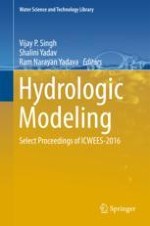2018 | OriginalPaper | Chapter
Watershed Prioritization of Wardha River Basin, Maharashtra, India Using Morphometric Parameters: A Remote Sensing and GIS-Based Approach
Authors : B. S. Manjare, S. Khan, S. A. Jawadand, M. A. Padhye
Published in: Hydrologic Modeling
Publisher: Springer Singapore
Activate our intelligent search to find suitable subject content or patents.
Select sections of text to find matching patents with Artificial Intelligence. powered by
Select sections of text to find additional relevant content using AI-assisted search. powered by
